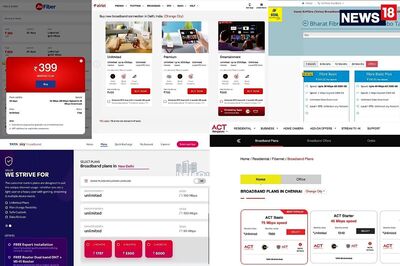
views
Massachusetts: When William Luz's father died behind bars last month at 62 of liver failure and other illnesses tied to a lifetime of illegal drug use, his son, a former addict himself, could have dulled the pain with heroin.
But Luz, who had been released from jail a few weeks before his father died, stayed clean. For that, he credits a pioneering addiction treatment program at the Barnstable County (Massachusetts) Correctional Facility.
"Honestly, it (the program) saved my life," said Luz, 44, on a break from his job as a cook at a bustling seafood restaurant in Sandwich, Massachusetts, not far from where he grew up.
Luz, who served two years for a burglary he committed with his father, received an injection of the drug naltrexone before he left Barnstable. The 400-inmate jail offers it to people addicted to opioids from Vicodin to heroin.
The drug, made by Dublin, Ireland-based Alkermes Plc and sold under the brand name Vivitrol, blocks receptors in the brain, reducing cravings and barring users from getting high for about 25 days at a cost of nearly $1,000 a shot.
Corrections officials and drug addiction specialists say programs like Barnstable's could help in the fight against opioid addiction, which has been rising in the United States in recent years.
But the programs, which have sprung up in 25 states across the country, are in early stages and even advocates say more time is needed to determine the success of naltrexone shots over the long haul.
Barnstable's program is one of a handful of initiatives in Massachusetts to take on abuse of heroin and other opioid drugs, which Governor Deval Patrick has declared a public health crisis.
While judges are increasingly sentencing drug-addicted offenders to naltrexone programs, Barnstable officials say its "re-entry program" is the first voluntary program in the country. The program has become the model for similar efforts in Illinois, Missouri, Maine and elsewhere.
"We've had great success with it thus far," said Barnstable Sheriff James Cummings.
The jail recently released data showing that out of more than 100 inmates who have gone through Barnstable's program, which was launched in April 2012, 21 percent have been re-incarcerated.
That is well below national averages. Nearly 70 per cent of former US inmates are re-arrested within three years, with 57 per cent of those arrests taking place within the first year, according to the US Department of Justice.
'NOT ADDICTIVE'
Cummings said he decided to try naltrexone as a treatment for prisoners because it has no euphoric effects, is not addictive and has no street value, unlike the commonly used opiate addiction treatment drugs suboxone and methadone, both of which are composed in part of synthetic opiates that can lead to dependency.
The Barnstable program, which also involves ongoing counseling, housing assistance, job placement and a link to outpatient care, provides an initial shot of naltrexone about a week before an inmate is released.
The jail's staff sets up appointments for former inmates to receive additional shots, which are typically paid for by Medicaid, in the months following release and tracks their progress through family contacts and outpatient programs.
Substance abuse specialists are optimistic about naltrexone but say more time is needed to study its effects, especially in the case of Vivitrol, which was approved by the US Food and Drug Administration for opioid treatment in 2010.
"I don't think it's been used enough in clinical practice yet ... for largely a reason of cost it's not been adopted as a standard treatment" said Dr. Samuel Ball, chief executive officer of the National Center on Addiction and Substance Abuse at Columbia University.
Still, Ball said he is encouraged by naltrexone's effect on former inmates. "It's one less thing that they need to worry about, and they've got a lot to worry about," he said.
Raymond Tamasi, who runs the Gosnold on Cape Cod treatment center, which partners with Barnstable to provide ongoing shots and counseling to newly freed inmates, agreed that questions remain about the program's long-term impact on recidivism and the sobriety of former inmates.
"All of these things need to be looked at, evaluated, but the concept is very sound," he said.
Vivitrol's maker, Alkermes, is studying the drug's effectiveness on US prison inmates post-release, but results are not expected until after April 2015. New York University also has begun a clinical trial of naltrexone-assisted re-entry programs, according to the U.S. National Institutes of Health.
Alkermes is the only company offering FDA-approved naltrexone in an extended-release shot form.
Other corrections officials who have adopted the Barnstable method are in a wait-and-see phase.
"We are in the beginning stages," said Lisa Wright, administrator of the Auglaize County, Ohio, jail, which recently adopted a version of Barnstable's Vivitrol model. "We don't know what the outcome is."
Cummings said he plans to stick with the program. The cost of one naltrexone shot, he said, is 45 times less than what it takes to house an inmate for a year at his jail.
"It's not the magic pill," he said. "It's just another tool, and as far as we're concerned a very effective tool."
















Comments
0 comment